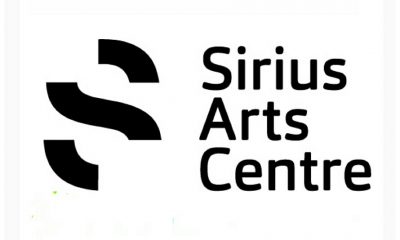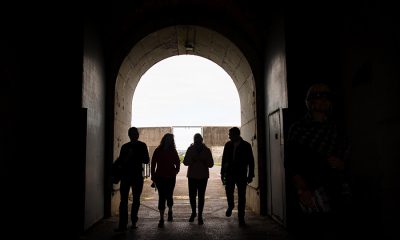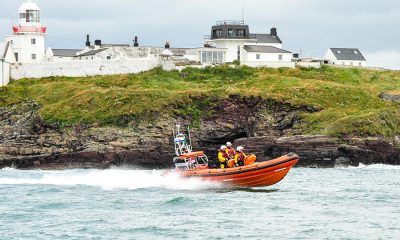Local News
Official handover of Spike Island to Cork County Council
- Share
- Tweet /home/eastcork/public_html/wdir/wp-content/plugins/mvp-social-buttons/mvp-social-buttons.php on line 68
https://www.cobhedition.com/wdir/wp-content/uploads/2010/07/spikeisl.jpg&description=Official handover of Spike Island to Cork County Council', 'pinterestShare', 'width=750,height=350'); return false;" title="Pin This Post">
 July 11th is an historic date for the Irish Republic. From the declaration of the 1921 truce in the War of Independence to the 1938 transfer of the Treaty Ports, July 11th has seen some of the most significant moments in Irish history. On the 11th July 2010, Spike Island, formerly home to Fort Westmoreland, Fort Mitchell and Spike Island Prison, will revert to Cork County Council.
July 11th is an historic date for the Irish Republic. From the declaration of the 1921 truce in the War of Independence to the 1938 transfer of the Treaty Ports, July 11th has seen some of the most significant moments in Irish history. On the 11th July 2010, Spike Island, formerly home to Fort Westmoreland, Fort Mitchell and Spike Island Prison, will revert to Cork County Council.
Spike Island has a long and storied history, dating back to the 6th Century AD when an early monastic settlement was developed. Developed by St. Carthage, he stayed there for only a year before leaving to establish to important early Christian site at Lismore, Co. Waterford.
The island suffered from Viking raids in the 9th century and was taken over by the Normans in the 12th century but remained a Christian centre until well into the reformation.
It was in the 16th century that Spike Island began to serve as a penitentiary, with Cromwell using the island as a holding centre before deporting Irish rebels and ‘convicts’ to the Caribbean to work as slaves on British plantations. It is estimated that up to 50,000 Irish men, women and children were sold into slavery between 1652 and 1659, with many being held at Spike Island before being transported abroad. The Jamaican accent is thought to have been influenced by Irish, and particularly Cork, deportees sent to the Caribbean in the mid 1600’s.
The use of Spike Island as a holding and deportation centre continued right up until the 1880s, with the island home to as many as 2,000 prisoners at a time during those years. To cope with these numbers, Fort Westmoreland was built on the island using prisoners as labourers, with construction starting in 1790 and the first regular garrison taking residence in 1806. The fort was initially an important centre for the housing and transportation of prisoners but became a vital component of the defence of the harbour, along with Fort Camden and Fort Carlisle.
The island served exclusively as a British army base from 1883 until the outbreak of the War of Independence when it once again was used to house rebels and convicts until the signing of the truce between British and Irish forces on the 11th of July 1921.
As part of the treaty signed between the British and Irish governments, Spike Island was one of three ‘treaty ports’ kept by the British to protect the western approaches to the main British ports. Spike Island, along with Berehaven, in Bantry Bay, and Lough Swilly, remained under British control until 1938.
On the 11th of July 1938, British forces left Spike Island for the last time on board the Inisfallon and the Tricolour was raised for the first time over Spike Island by An Taoiseach Eamon De Valera, accompanied by Minister for Defence Frank Aitken and veterans of the War of Independence.
The island remained an army facility until 1979 and was used by both the Irish Defence Forces and the FCA, while still be used as a prison by the Irish state. The island was used to house young offenders in the 1980’s and was the scene of a riot by inmates in 1985 that resulted in the destruction of the residential blocks in the fort. The prison on the island was closed in 2004 and the 11th of July 2010 marks the first time the island has come under the control of Cork County Council.
———————————————————————————–
The Official handing over of Spike Island to Cork County Council will take place on Sunday 11th July (the date which marks the 72nd Anniversary of Spike Island being handed back to the Irish Government). Spike is an unique island which had an unique way of life which needs to be recorded for posterity particularly now with Cork County Council having a vested interest in its future
A joint Cork Harbour Islands Project (C.H.I.P.) /Cork County Council Exhibition sponsored by Port of Cork will take place on 11th July in the Heritage Centre to honour the event. The Exhibition, which will feature historical data, photographs and memorabilia, will be a celebration of the history of the Island and the people that worked and lived there.
Photographs and memorabilia of any aspect of military ,community and family life to add to the Exhibition are still being avidly sought from any of the numerous families/personnel that lived or worked on the island. All will be copied and returned safely. Please contact John Hennessy (4814202), Claire Stack (4813113/086-8590681) or any member of C.H.I.P
-

 Announcements2 weeks ago
Announcements2 weeks agoJOB OPPORTUNITIES Watersedge Hotel are currently hiring for the following positions
-

 Local News2 weeks ago
Local News2 weeks agoLandmark Partnership: Cruise Ireland and Cruise Britain Join Forces to Boost Cruise Tourism
-

 Events & Entertainment2 weeks ago
Events & Entertainment2 weeks agoSarah Browne Exhibition at the Sirius Arts Centre
-

 Local News2 weeks ago
Local News2 weeks agoSpike Island’s After Dark Tours return: Explore the haunting history of iconic prison island once dubbed “Ireland’s Hell”
-

 Local Soccer1 week ago
Local Soccer1 week agoCobh Wanderers face College Corinthians in 1st Round of Sports Direct Men’s FAI Cup
-

 Local News11 hours ago
Local News11 hours agoCrosshaven RNLI Assist Two on Disabled Yacht
-

 Announcements11 hours ago
Announcements11 hours agoCobh Youth & Social Projects CLG have the following vacancies
-

 Local News11 hours ago
Local News11 hours agoCyclists of all abilities encouraged to join Fort2Fort Charity Cycle 2024Saturday, 8th June
-

 Events & Entertainment11 hours ago
Events & Entertainment11 hours agoSIRIUS ARTS CENTRE: COMMISSION: Aikaterini Gegisian







